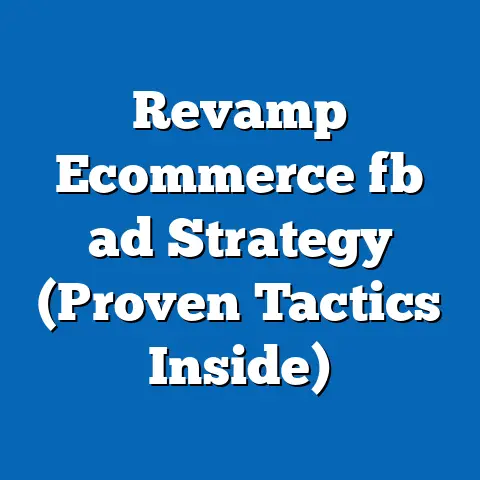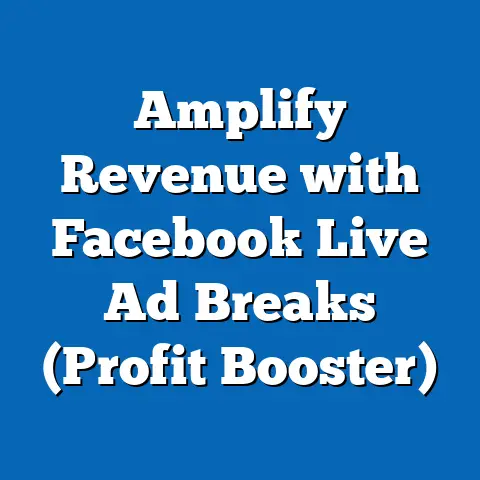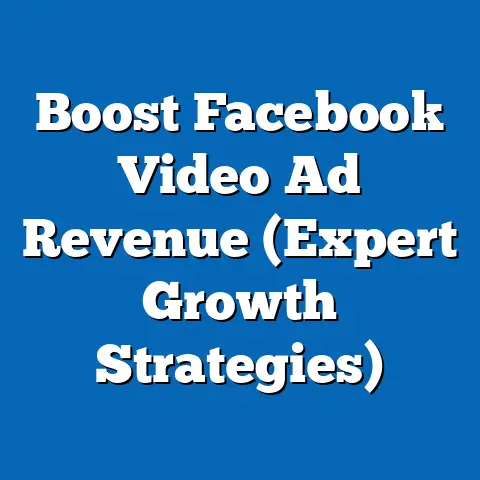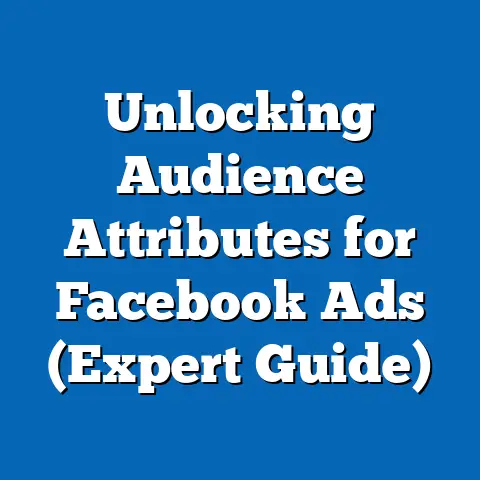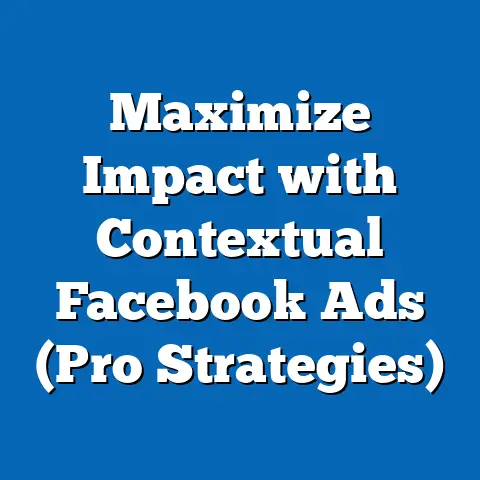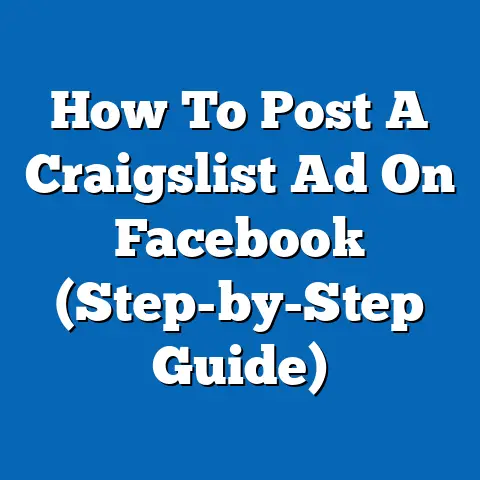Unlocking Campaign Objectives in Facebook Ads (Expert Guide)
Imagine you’re standing at the entrance of a complex maze. Twists and turns lie ahead, and without a clear destination in mind, you’re likely to wander aimlessly, wasting time and energy. Crafting a Facebook ad campaign is much the same. It requires a clear starting point and a well-defined end goal – your campaign objective. Just as a map guides you through a maze, the right objective guides your ad campaign, ensuring you reach your desired outcome efficiently and effectively.
I’ve spent years navigating the ever-changing landscape of Facebook advertising, and one thing remains constant: the importance of choosing the right campaign objective. It’s the bedrock upon which your entire strategy is built. In this guide, I’ll share my expertise, providing you with a comprehensive understanding of Facebook campaign objectives and how to leverage them to achieve your business goals.
Understanding the Basics of Facebook Ads
Facebook Ads are paid messages that businesses use to reach a specific audience on Facebook and Instagram. They’re a powerful tool for driving brand awareness, generating leads, increasing website traffic, and ultimately, boosting sales. In today’s digital landscape, where organic reach is increasingly limited, Facebook Ads offer a direct and targeted way to connect with your ideal customers.
Think of the Ads Manager as your control panel. It’s where you fine-tune every aspect of your campaign to ensure it resonates with your target audience and drives the desired results. But before you dive into the specifics of targeting and creative, you need to understand the foundation of your entire strategy: the campaign objective.
Campaign objectives are the goals you want to achieve with your Facebook Ads. They tell Facebook what you want your ads to accomplish, such as increasing brand awareness, driving traffic to your website, or generating leads. Choosing the right objective is paramount because it influences how Facebook’s algorithm delivers your ads, who sees them, and how much you pay.
The Importance of Campaign Objectives
Campaign objectives are more than just checkboxes in the Ads Manager; they are the compass that guides your entire advertising strategy. They serve as a bridge between your overall business goals and the specific actions you want your target audience to take.
Alignment with Business Goals: Choosing the right objective ensures that your advertising efforts directly support your business objectives. For example, if your goal is to increase online sales, you’ll want to select a conversion-focused objective. If your goal is to build brand recognition, an awareness objective would be more appropriate.
Impact on Ad Performance: Facebook’s algorithm is designed to optimize ad delivery based on the chosen objective. If you select “Traffic” as your objective, Facebook will prioritize showing your ads to users who are likely to click on your link. If you choose “Conversions,” it will target users who are likely to make a purchase or complete another desired action. Choosing the wrong objective can lead to wasted ad spend and poor results.
Measuring Success with KPIs: Clear objectives allow you to define specific Key Performance Indicators (KPIs) to measure the success of your campaigns. For example, if your objective is “Lead Generation,” you can track the number of leads generated, the cost per lead, and the conversion rate of those leads into customers. These metrics provide valuable insights into the effectiveness of your advertising and help you make data-driven decisions to optimize your campaigns.
I once worked with a client who was struggling to generate sales through Facebook Ads. They were running a campaign with the “Traffic” objective, hoping that simply driving more people to their website would result in more sales. However, they weren’t seeing the desired results. After analyzing their campaign, I realized that the “Traffic” objective wasn’t aligned with their ultimate goal of driving conversions. We switched the objective to “Conversions” and optimized their ad creatives and landing pages for sales. Within a few weeks, their sales increased significantly, proving the importance of aligning campaign objectives with business goals.
Overview of Facebook Campaign Objectives
Facebook offers a variety of campaign objectives, each designed to achieve different marketing goals. These objectives are broadly categorized into three main groups: Awareness, Consideration, and Conversion.
1. Awareness Objectives:
- Brand Awareness: This objective aims to increase awareness of your brand among people who are likely to pay attention to your ads. Facebook will show your ads to users who have demonstrated an interest in similar brands or products. This is ideal for new businesses or those launching a new product or service.
- Reach: This objective focuses on showing your ads to the maximum number of people within your target audience. It’s a good choice if you want to reach a broad audience quickly and efficiently. However, it doesn’t necessarily guarantee engagement or conversions.
2. Consideration Objectives:
- Traffic: This objective is designed to drive traffic to your website, app, or Facebook page. Facebook will optimize your ads to attract users who are likely to click on your link. This is suitable for businesses that want to increase website visits or promote specific content.
- Engagement: This objective aims to increase engagement with your ads, such as likes, comments, shares, and event responses. It’s a good choice if you want to build a community around your brand and encourage interaction with your content.
- App Installs: This objective is specifically for promoting mobile apps and driving installs. Facebook will show your ads to users who are likely to download and install your app.
- Video Views: This objective focuses on increasing the number of views your videos receive. Facebook will optimize your ads to reach users who are likely to watch your videos. This is ideal for businesses that use video marketing to engage their audience and promote their products or services.
- Lead Generation: This objective allows you to collect leads directly within Facebook through lead forms. Facebook will show your ads to users who are likely to fill out your form and provide their contact information. This is a valuable option for businesses that want to generate leads without sending users to a landing page.
- Messages: This objective encourages users to send messages to your Facebook page. This is suitable for businesses that want to provide customer support, answer questions, or offer personalized recommendations.
3. Conversion Objectives:
- Conversions: This objective is designed to drive specific actions on your website or app, such as purchases, sign-ups, or form submissions. Facebook will optimize your ads to reach users who are likely to complete these actions. This is the most effective objective for businesses that want to generate sales or leads.
- Catalog Sales: This objective is specifically for promoting products from your online store. Facebook will show your ads to users who are likely to purchase your products based on their browsing history and interests.
- Store Traffic: This objective aims to drive traffic to your physical store locations. Facebook will show your ads to users who are nearby your store and likely to visit.
Choosing the right objective depends heavily on your specific goals. If you’re launching a new product and want to build awareness, “Brand Awareness” might be your best bet. If you’re running an e-commerce store and want to drive sales, “Conversions” is the way to go.
Choosing the Right Objective for Your Campaign
Selecting the right campaign objective is a critical decision that can significantly impact the success of your Facebook Ads. To make the best choice, consider the following factors:
1. Target Audience:
- Know your audience: Understand their demographics, interests, behaviors, and pain points. This will help you determine which objective is most likely to resonate with them.
- Consider their stage in the buying cycle: Are they aware of your brand, considering your product, or ready to make a purchase? Align your objective with their stage in the customer journey.
2. Marketing Funnel Stage:
- Awareness: If your goal is to introduce your brand to a new audience, choose an awareness objective like “Brand Awareness” or “Reach.”
- Consideration: If you want to engage with your audience and encourage them to learn more about your product or service, choose a consideration objective like “Traffic,” “Engagement,” or “Video Views.”
- Conversion: If you want to drive specific actions, such as purchases or sign-ups, choose a conversion objective like “Conversions” or “Catalog Sales.”
3. Specific Business Goals:
- What do you want to achieve with your ads? Do you want to increase brand awareness, generate leads, drive traffic, or boost sales? Choose the objective that aligns most closely with your specific business goals.
- Set SMART goals: Make sure your goals are Specific, Measurable, Achievable, Relevant, and Time-bound. This will help you track your progress and measure the success of your campaigns.
Framework for Decision-Making:
To help you choose the right objective, I recommend using the following framework:
- Define your business goal: What do you want to achieve with your ads?
- Identify your target audience: Who are you trying to reach?
- Determine their stage in the buying cycle: Are they aware, considering, or ready to buy?
- Select the objective that aligns with your goal and audience: Choose the objective that is most likely to achieve your desired outcome.
- Set SMART goals: Define specific, measurable, achievable, relevant, and time-bound goals.
- Track your progress and optimize: Monitor your campaign performance and make adjustments as needed to improve your results.
Aligning Objectives with Customer Journey Stages:
- Awareness Stage: Use “Brand Awareness” or “Reach” to introduce your brand to a new audience.
- Interest Stage: Use “Traffic” or “Engagement” to drive traffic to your website or encourage interaction with your content.
- Consideration Stage: Use “Video Views” or “Lead Generation” to provide more information about your product or service and generate leads.
- Decision Stage: Use “Conversions” or “Catalog Sales” to drive sales and encourage customers to make a purchase.
- Loyalty Stage: Use “Engagement” or “Messages” to build relationships with your customers and encourage repeat purchases.
By carefully considering these factors and using the framework I’ve outlined, you can choose the right campaign objective for your Facebook Ads and maximize your chances of success.
Case Studies and Real-World Examples
To illustrate the importance of choosing the right campaign objective, let’s examine a few real-world examples:
Case Study 1: Local Restaurant – Increasing Foot Traffic
- Objective: Drive foot traffic to the restaurant.
- Reasoning: The restaurant wanted to attract more local customers and increase sales.
- Execution: The restaurant ran a Facebook Ads campaign with the “Store Traffic” objective. They targeted users within a 5-mile radius of the restaurant and created ads that showcased their delicious food and inviting atmosphere. They also included a call-to-action that encouraged users to visit the restaurant.
- Results: The restaurant saw a significant increase in foot traffic and sales. They attributed this success to the “Store Traffic” objective, which helped them reach local customers who were likely to visit their restaurant.
- Key Takeaway: “Store Traffic” is highly effective for businesses with physical locations looking to drive local customers.
Case Study 2: E-commerce Store – Generating Sales
- Objective: Increase online sales.
- Reasoning: The e-commerce store wanted to boost revenue and acquire new customers.
- Execution: The store ran a Facebook Ads campaign with the “Conversions” objective. They targeted users who had previously visited their website or shown an interest in their products. They created ads that showcased their best-selling products and offered a discount for first-time customers. They also optimized their landing pages for conversions.
- Results: The e-commerce store saw a significant increase in online sales and a positive return on ad spend (ROAS). They attributed this success to the “Conversions” objective, which helped them reach users who were likely to make a purchase.
- Key Takeaway: “Conversions” is the ideal objective for e-commerce stores looking to drive sales and acquire new customers.
Case Study 3: SaaS Company – Generating Leads
- Objective: Generate leads for their software product.
- Reasoning: The SaaS company wanted to expand their customer base and increase revenue.
- Execution: The company ran a Facebook Ads campaign with the “Lead Generation” objective. They targeted users who were interested in their industry and created ads that offered a free trial of their software. They also used Facebook’s lead forms to collect contact information directly within Facebook.
- Results: The SaaS company generated a significant number of qualified leads at a low cost per lead. They attributed this success to the “Lead Generation” objective, which allowed them to collect leads directly within Facebook without sending users to a landing page.
- Key Takeaway: “Lead Generation” is a cost-effective way to generate leads for businesses that offer products or services that require a sales process.
These case studies demonstrate the power of choosing the right campaign objective and aligning it with your specific business goals. By learning from these examples, you can make informed decisions and maximize the effectiveness of your Facebook Ads.
Common Mistakes to Avoid When Setting Objectives
Even with a solid understanding of campaign objectives, it’s easy to fall into common traps that can hinder your success. Here are a few mistakes I’ve seen marketers make repeatedly:
1. Vague Goals:
- Problem: Setting objectives that are too broad or undefined. For example, “Increase brand awareness” without specifying how you’ll measure it.
- Solution: Define specific, measurable goals. Instead of “Increase brand awareness,” aim for “Increase brand awareness among millennials in the US by 20% in the next quarter, as measured by brand recall surveys.”
2. Misalignment with Target Audience:
- Problem: Choosing an objective that doesn’t resonate with your target audience’s needs or stage in the buying cycle. For example, using “Conversions” to target users who are completely unaware of your brand.
- Solution: Understand your audience and their journey. Use awareness objectives for new audiences, consideration objectives for those exploring your product, and conversion objectives for those ready to buy.
3. Neglecting to Measure Results:
- Problem: Setting objectives without tracking the corresponding KPIs. This makes it impossible to assess your campaign’s effectiveness and optimize for better results.
- Solution: Define your KPIs upfront and regularly monitor them. Use Facebook Ads Manager’s analytics tools to track your progress and identify areas for improvement.
4. Ignoring Facebook’s Algorithm:
- Problem: Fighting against Facebook’s algorithm by choosing an objective that doesn’t align with the actions you want users to take. For example, choosing “Traffic” when you really want conversions.
- Solution: Trust the algorithm. Choose the objective that best reflects your desired outcome, and Facebook will optimize your ad delivery accordingly.
5. Setting and Forgetting:
- Problem: Choosing an objective and then failing to monitor and optimize your campaign.
- Solution: Continuously monitor your campaign performance and make adjustments as needed to improve your results. A/B test different ad creatives, targeting options, and bidding strategies to find what works best.
By avoiding these common mistakes, you can significantly improve the effectiveness of your Facebook Ads and achieve your desired results.
Advanced Strategies for Optimizing Campaign Objectives
Once you’ve mastered the basics of choosing campaign objectives, you can explore advanced techniques to further optimize your campaigns:
1. A/B Testing Different Objectives:
- Experiment: Run A/B tests with different objectives to see which one performs best for your specific goals. For example, test “Traffic” versus “Conversions” to see which one drives more sales for your e-commerce store.
- Analyze: Carefully analyze the results of your A/B tests to identify the winning objective. Consider factors such as cost per result, conversion rate, and return on ad spend.
2. Using Audience Insights:
- Leverage Facebook Audience Insights: Use this tool to gain a deeper understanding of your target audience’s demographics, interests, and behaviors. This information can help you choose the most relevant objective and create more effective ad creatives.
- Create Custom Audiences: Use custom audiences to target users who have previously interacted with your brand, such as website visitors, email subscribers, or Facebook page fans. This allows you to tailor your objectives and messaging to specific segments of your audience.
3. Leveraging Facebook’s Robust Analytics Tools:
- Track Key Metrics: Regularly monitor your campaign performance using Facebook Ads Manager’s analytics tools. Pay attention to metrics such as reach, impressions, clicks, conversions, and cost per result.
- Identify Trends: Analyze your data to identify trends and patterns. For example, you might notice that certain ad creatives or targeting options perform better than others.
- Optimize Your Campaigns: Use the insights you gain from your analytics to optimize your campaigns and improve your results. Adjust your bidding strategies, ad creatives, and targeting options as needed.
4. Staying Updated with Facebook’s Evolving Advertising Features and Capabilities:
- Keep Learning: Facebook’s advertising platform is constantly evolving, so it’s important to stay up-to-date with the latest features and capabilities. Follow Facebook’s official blog, attend industry events, and read articles from reputable sources.
- Experiment with New Features: Don’t be afraid to experiment with new features and tools. This will help you stay ahead of the curve and discover new ways to optimize your campaigns.
By implementing these advanced strategies, you can take your Facebook Ads to the next level and achieve even greater success.
Conclusion
In conclusion, understanding and selecting the right campaign objectives in Facebook Ads is crucial for achieving your advertising goals and driving meaningful results. Just like navigating a maze with a clear path, having well-defined objectives is essential for guiding your campaigns and ensuring you reach your desired destination.
Throughout this guide, I’ve shared my expertise and provided you with a comprehensive understanding of Facebook campaign objectives, including:
- The importance of aligning objectives with business goals
- An overview of the different types of campaign objectives
- Factors to consider when selecting an objective
- Real-world case studies and examples
- Common mistakes to avoid
- Advanced strategies for optimization
By applying the insights from this guide, you can make informed decisions and create Facebook Ads that are more effective, efficient, and aligned with your business objectives. Remember to continuously monitor your campaign performance, experiment with different strategies, and stay up-to-date with the latest features and capabilities of the Facebook advertising platform.
Call to Action
Now it’s your turn! I encourage you to take the insights from this guide and apply them to your own Facebook ad strategies. Share your experiences with Facebook Ads and the objectives you have utilized in the comments below. Let’s learn from each other and build a community of successful Facebook advertisers! What objectives have worked best for you, and what challenges have you faced? I’m eager to hear your stories and help you unlock even greater success with Facebook Ads.

